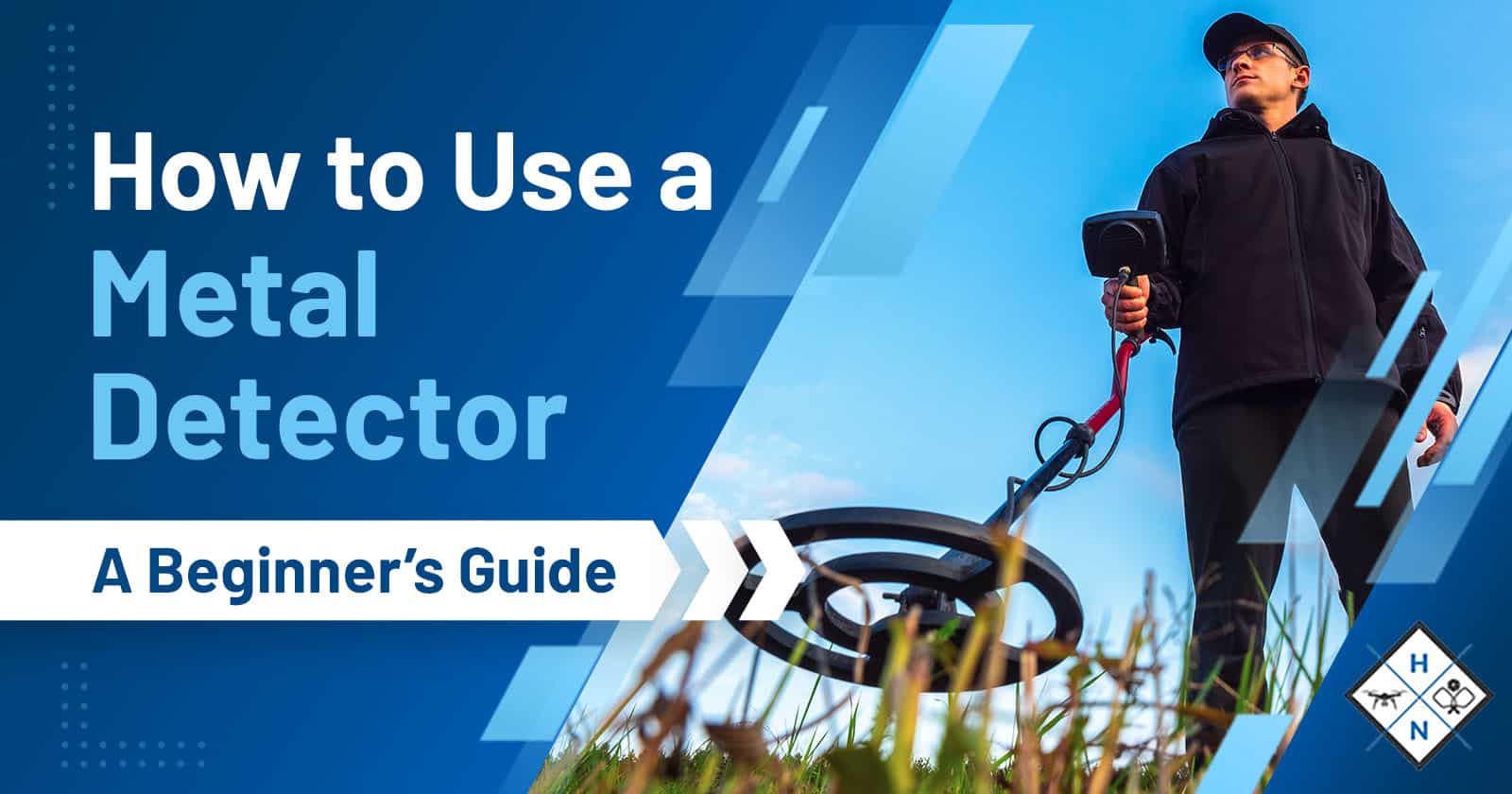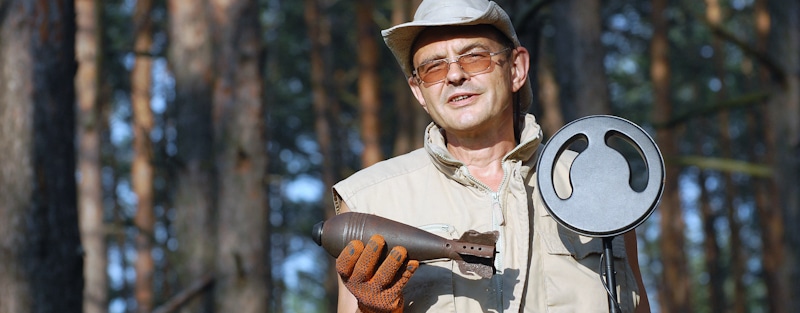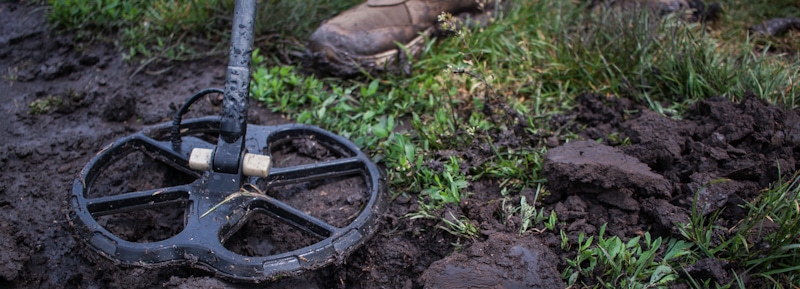Metal detecting has been practiced for a long time. However, due to cutting-edge technical improvements which have simplified the procedure, it has recently gained much interest. Metal detecting is also highly addicting since you become intrigued with the prospect of unearthing more treasures; however, you must know how to detect metal.
The first step is to hold the coil some inches off the ground and move it in a straight line. Make a leisurely sweeping motion in different locations to ensure you do not waste time looking in the same place. Start moving it around when the detector beeps till you get the strongest signal.
Metal detecting is among the fun activities you can engage in; however, you should have excellent and well-functioning metal detectors to enjoy this activity. You also need to understand how to use a metal detector and how metal detectors work.
 How To Use A Metal Detector For Beginners
How To Use A Metal Detector For Beginners
There are several reasons people metal detect asides because technology has made it easy. One of the common reasons is the excitement of unearthing something hidden over hundreds, if not thousands, of years and holding it in our hands.
The first step to metal detecting as a beginner is to purchase a metal detector. After getting one, you should understand your metal detector properly. It does not matter if it is your first detector or your tenth; everyone should know how to use theirs. Only by fully comprehending the functioning and qualities of your detector will you be able to appreciate every search or hunt you do.
Whether you use an instructional CD, the manufacturer's handbook, or one of the many online lessons available, you must bridge the gap between learning how to use your detector and unearthing some of the most significant archaeological, valuable, or historical findings.
The next step is to get an ideal location for metal detection. When you begin searching, you will notice that your smartphone emits many different tones of beeps. As you get more experienced, you will be able to recognize your targets more accurately using those sounds. Also, if background noise bothers you, wear headphones.
If you are treasure hunting, avoid power walking because you will probably overlook your targets. Walk gently and maintain your detector's coil to the ground as possible without hitting or touching it. After you have pinpointed your target's position, increase the size of your hand, go down on your knees, and step back to about three to five inches before inserting the digger.
Begin cutting in a counterclockwise direction, making a horseshoe shape. Upon cutting the target, use your digger to pry out the plug, causing it to fall on its head. The plug serves as a hinge at this point. To avoid dirt on the ground or the grass, lay your towel on the grass directly across from your hole.
If your target is not inside, inspect the plug first, then the hole with the portable pinpointer. Put it on your towel if you want to dig up any additional dirt from the plug or the hole. Once you have found your target, gently pull the ends of your towel to push any dirt back into the hole.
Finally, flip the plug back over and firmly press it in place, ensuring no dirt is visible on the ground or grass. After getting your finding, keep your prized findings safe with a pouch or pack. When you want to clean them, ensure you do so with a soft toothbrush.
How Do Metal Detectors Work?
Metal detectors function by sending an electromagnetic field from their search coil to the ground. Metal items that come into contact with the electromagnetic field become energized and emit their electromagnetic field. The detector's search coil absorbs the retransmitted field and produces a target response, which alerts the user.
Mine lab metal detectors can distinguish between different sorts of targets and can be programmed to ignore undesired targets. A regular metal detector is small and light, with only a few pieces. It features a stabilizer which is a device that keeps the unit steady when it is swept back and forth.
The control box houses the controls, the CPU, the batteries, the circuitry, and the speaker. It also features a shaft that connects the coil to the control box; it is usually adjustable so that you may set it to a suitable height for you. The last part of a metal detector is the search coil; it is the portion that effectively detects the metal.
How To Operate A Metal Detector
It is easy to use a metal detector; gradually move it across the area you want to search after turning on the unit. In most circumstances, wave the coil back and forth across the ground in front of you. It emits an auditory signal when you move it over a particular object. Advanced metal detectors have displays that show the type of metal detected and the depth to which the target object is buried.
You should stay in a favorable position and then extend or retract the stem using a metal detector. The coils can hover just above the ground when you hold the unit. Slowly stroll around the room while moving the detector from sideways. Keeping the search coils perpendicular to the ground and as close to the ground as possible is essential.
How To Read A Metal Detector
The first step to reading a metal detector is turning it on and choosing the settings. After selecting the setting you want, you should begin your search. Every metal detector will show a number during your metal detecting. Numbers reflect the conductivity measurement of your metal detector.
Different metal types have varying conductivities; the numbers help determine their type. On a conductivity scale, iron is at the bottom of the list. On the other hand, Aluminum receives higher scores due to its high conductivity.
Keep the soil composition of your hunting sites in mind. Signals are used to differentiate targets underground; therefore, the numbers read will depend on them. These indicators are best used in public locations.
How To Use A Metal Detector Settings
Every metal detector is different; however, most of them have the same settings. The first setting in a metal detector is the detection mode which helps the device concentrate on finding specific object types like relics, coins, jewelry, and other metal types. The discriminating setting enables you to filter out things you do not want to find.
Metals in tiny levels can be found in various products; these metals may trigger metal detectors on rare occasions. This ground balancing setting can disregard metals below a specific threshold. The sensitivity setting is the last on a metal detector. The more you increase your detector's sensitivity, the more metal it will find.
 Metal Detector Uses
Metal Detector Uses
Metal detectors are electronic devices that are commonly used to look for metals. These sensors or probes emit a buzzer, light up a led, or any other signaling device to show a metal's presence. These detectors are widely used in a variety of industrial processes. They are widely employed to provide security at critical locations such as military facilities, hotels, railways, airports, and other government buildings.
They are typically employed to detect gold, weapons, or any other metal at these locations. They can also be used in civil engineering. It is commonly utilized in archeology to look for extinct species' remains.
Also read: Best Places to Metal Detect [COMPLETE GUIDE]
Final Thoughts
You may enjoy a trouble-free treasure hunting adventure because now you know how to interpret metal detectors. Although it takes time, the effort is well worth the wait. Metal detectors use DISC characteristics to classify the metals you are looking for. You can also adjust the gain levels to achieve the desired sensitivity.
Keep reading:
- The Best Metal Detecting Accessories [BUYER'S GUIDE]
- Do Metal Detectors Detect Gold? Or Is It Just A Myth?
- Metal Detector Accessories – Must-Haves for Metal Detectors
Shawn Manaher loves to play with new toys and dive into new hobbies. As a serial entrepreneur, work definitely comes first but there is always room for hobbies.


 How To Use A Metal Detector For Beginners
How To Use A Metal Detector For Beginners Metal Detector Uses
Metal Detector Uses